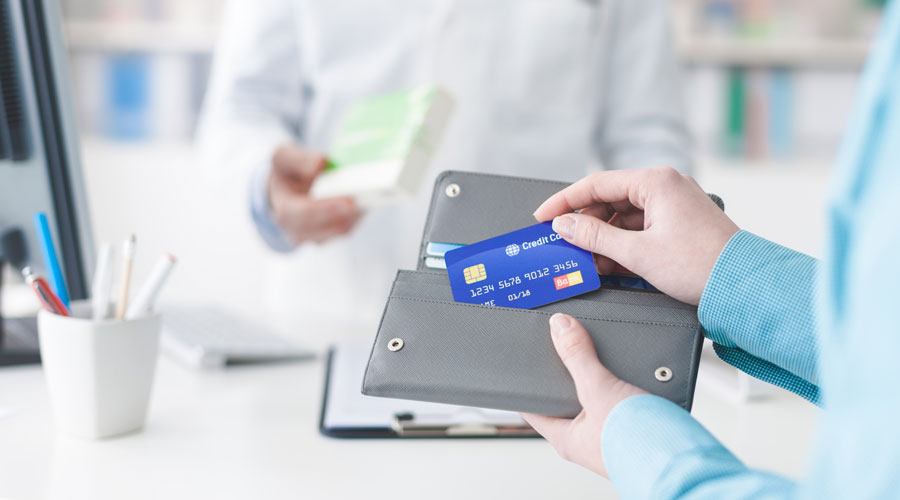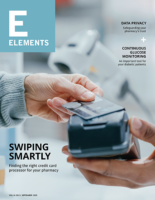How well do you know your front-end shoppers’ purchasing habits?
The National Retail Federation (NRF) recently conducted a comprehensive survey to examine shopping habits during the holidays and found some interesting results.
Your patients are shoppers, too. Use this glimpse into people’s shopping habits to give your pharmacy an edge and boost your front-end sales this season.
The first thing to know is that 90 percent of people said they were convinced to make a purchase they weren’t sure about.
Meaning, you can persuade shoppers if you know how to inspire them.
We’ve pulled out five revealing holiday shopping habits your pharmacy can use to encourage shoppers to make more front-end purchases this holiday season.
1. Shoppers will give up searching if they don’t find what they need
Shoppers don’t have a lot of patience during the holiday season.
In 2016, 77 percent of shoppers left stores empty-handed multiple times because they couldn’t find what they wanted.
Here’s how to combat confusion and keep shoppers from leaving your pharmacy without a purchase:
- Have plenty of knowledgeable staff ready to help shoppers
- Put up clear signage with large font
- Use an intuitive front-end arrangement
2. Shoppers want recommendations
More than half of online holiday shoppers said they purchased an item that a retailer recommended.
That statistic is especially important for pharmacies because many of your products require expertise.
Shoppers can’t research online for the products your pharmacy offers as easily as they can with other retail products. They need guidance when buying diabetic shoes, compression stockings or walking canes, for example.
Here are some ways to guide patients on their purchases:
- Create “Our Pharmacist Recommends” signs for select front-end items
- Train your staff to recommend popular front-end products
- Recommend front-end products through social media
3. Shoppers back out of purchases
During the holiday season, shoppers are more willing to leave a purchase at the register last-minute.
Seventy-five percent said they abandoned their purchase at least once while holiday shopping in 2016.
One study found that waiting in long lines is a big factor. According to the study, people are likely to abandon their cart after waiting eight minutes in line.
And the older a patient is, the smaller that number gets.
Prevent last-minute lost purchases by creating shorter wait times for patients.
And, allow patients to purchase products online and pick them up in your store. That feature helps them avoid lines altogether. One-third of shoppers said that option convinced them to make a purchase.
4. Shoppers make impulse buys
Nearly half of shoppers admitted to impulse buying during their holiday shopping.
Millennial and Generation Z shoppers tend to impulse buy the most, although older generations make impulse purchases as well.
Here are some strategies to encourage impulse purchases:
Place low-priced items at checkout. People are more likely to toss an item into their basket if it’s not a big hit to their wallet. Place small products like hand sanitizer, tissues and lip balm near your registers.
Showcase seasonal items. Impulse purchases meet an immediate need. A hungry person grabs a candy bar. A person traveling grabs a magazine. For the holiday season, place winter products front and center at the checkout and on your end caps, like gloves and cold and flu medicine.
Place complementary items together. A patient buying cold and flu medicine probably needs tissues, too. If you place tissues next to cold and flu products, patients are more likely to grab them.
5. Shoppers expect a promotion
Most shoppers said they’re confident good promotions and deals will last throughout the season.
Which means if you don’t offer a holiday promotion, patients will find one from another pharmacy.
Promotions can take the form of coupons, individual discounts and store-wide sales.
For the holiday season, limited-time promotions work best.
Half of shoppers said they’re prompted to buy when they know a sale will expire after a short time.
Shoppers have also come to expect another type of promotion: free shipping. At this point in the year, shipping costs can turn shoppers off. In fact, the top reason shoppers abandon an online cart is unexpected shipping costs.
If you have an e-commerce section on your pharmacy’s website but you can’t afford to offer free shipping, make sure patients know the shipping cost before they go to the checkout.
Use your new knowledge of holiday shopping habits to boost your front-end sales this season.
Want more pharmacy business tips and advice? Sign up for our e-newsletter.












